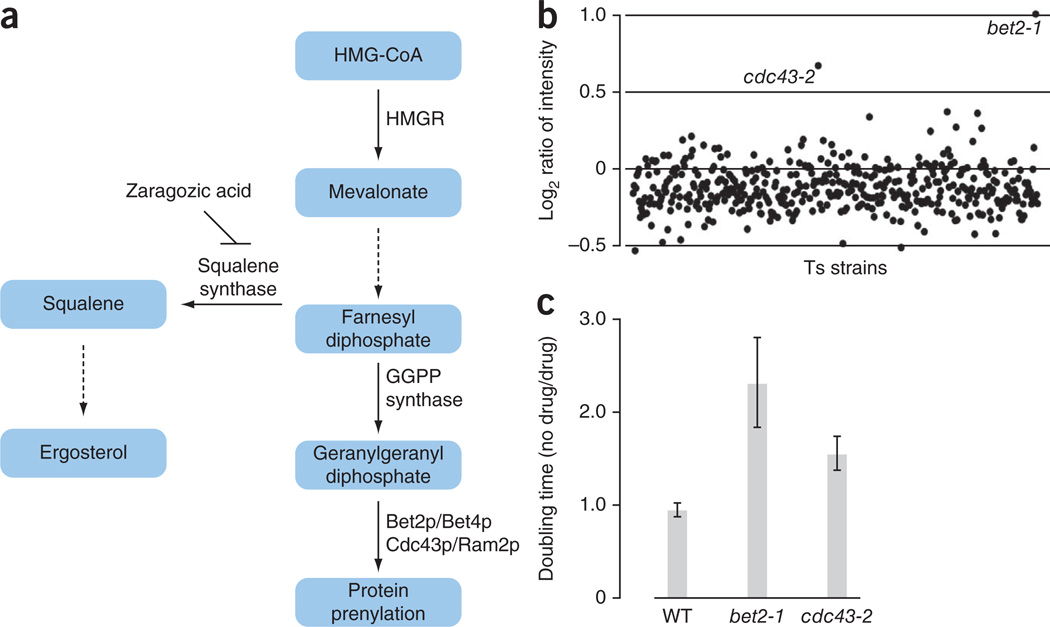Figure 2.
Zaragozic acid rescues bet2-1 and cdc43-2 ts phenotype. (a) Isoprenoid pathway in S. cerevisiae. The solid lines indicate one step and the dashed lines indicate multiple synthetic steps in the ergosterol and protein prenylation pathways44–46. (b) A pool of 440 barcoded ts mutants was grown in rich (YPD) medium in the presence of 4 mM of zaragozic acid A (ZA) or DMSO at 36.5 °C. Genomic DNA was prepared from cells after five generations of growth. Molecular barcodes were amplified by PCR and hybridized to a microarray (GeneChip Genflex Tag 16K Array v2, Affymetrix). The x axis represents the 440 ts strains ordered alphabetically by systematic name. The y axis represents the log2 ratio of barcode hybridization intensity between the ZA treatment and the solvent (DMSO) treatment. Mutants with highest log2 ratios at the restrictive temperature were identified as suppressors. (c) Yeast cells were grown in YPD with or without ZA in a 96-well plate at 36.5 °C. Fitness was defined as the ratio of doubling times measured in DMSO compared to ZA treatment. Error bars represent s.d. for four independent experiments.

